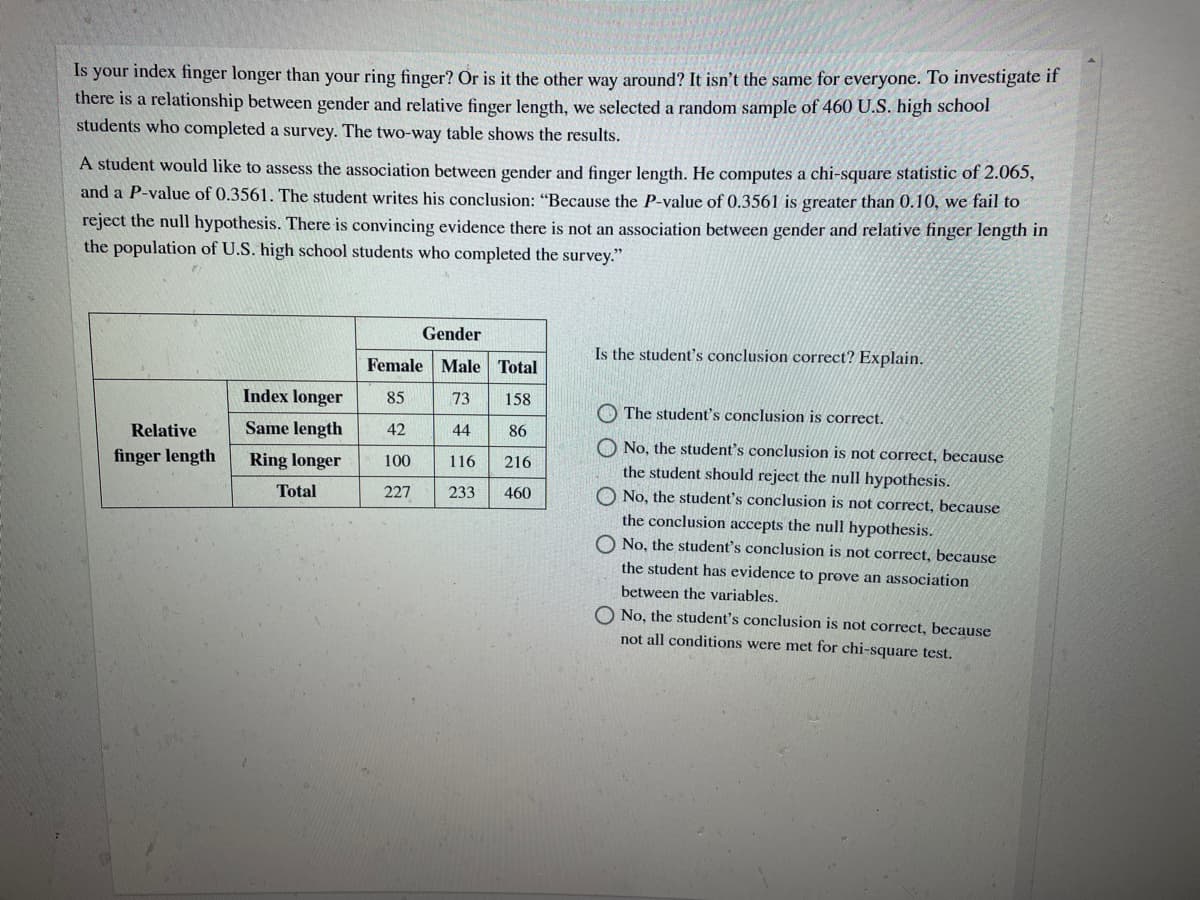Is your index finger longer than your ring finger? Or is it the other way around? It isn't the same for everyone. To investigate if there is a relationship between gender and relative finger length, we selected a random sample of 460 U.S. high school students who completed a survey. The two-way table shows the results. A student would like to assess the association between gender and finger length. He computes a chi-square statistic of 2.065, and a P-value of 0.3561. The student writes his conclusion: “Because the P-value of 0.3561 is greater than 0.10, we fail to reject the null hypothesis. There is convincing evidence there is not an association between gender and relative finger length in the population of U.S. high school students who completed the survey." Gender Is the student's conclusion correct? Explain. Female Male Total Index longer 85 73 158 O The student's conclusion is correct. Relative Same length 42 44 86 O No, the student's conclusion is not correct, because the student should reject the null hypothesis. O No, the student's conclusion is not correct, because finger length Ring longer 100 116 216 Total 227 233 460 the conclusion accepts the null hypothesis.
Inverse Normal Distribution
The method used for finding the corresponding z-critical value in a normal distribution using the known probability is said to be an inverse normal distribution. The inverse normal distribution is a continuous probability distribution with a family of two parameters.
Mean, Median, Mode
It is a descriptive summary of a data set. It can be defined by using some of the measures. The central tendencies do not provide information regarding individual data from the dataset. However, they give a summary of the data set. The central tendency or measure of central tendency is a central or typical value for a probability distribution.
Z-Scores
A z-score is a unit of measurement used in statistics to describe the position of a raw score in terms of its distance from the mean, measured with reference to standard deviation from the mean. Z-scores are useful in statistics because they allow comparison between two scores that belong to different normal distributions.

Trending now
This is a popular solution!
Step by step
Solved in 2 steps


